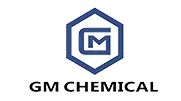Company News
Key Difference-Enols vs Enolates vs Enamines
Jun. 16, 2021
Enols, enolates and enamines are three different types of organic compounds. Enol is also called olefin alcohol. This is because enols are formed by combining olefins and alcohols. It is a reactive structure because the enol appears as an intermediate compound in a chemical reaction. Enolates are derived from enols. Enolates are conjugate bases of enols. This means that the enolate is formed by removing a hydrogen atom from the hydroxyl group of the enol. Enamine is an amine compound that contains an amine group near the double bond. The chemical reactivity of enolates and enamines are almost similar. The key difference between enol, enolate and enamine is that the enol contains a hydroxyl group with an adjacent C=C double bond and enolates contain a negative charge on the oxygen atom of an enol whereas the enamines contain an amine group adjacent to the C=C double bond. Contact us about our products.
Enol
What is enol?
Enol is an organic compound that contains a hydroxyl group (C=C double bond) adjacent to the alkene group. Enol is formed by the combination of alcohol and olefin. The name of this compound is derived from the original compound it was formed; "en" comes from alkene, and "ol" comes from alcohol.
Compared with enolates and enamines of the same molar mass, enols have the lowest nucleophilic activity. This means that the enol has poor nucleophilicity. However, its nucleophilicity is controlled by the electron-rich pi bond, which consists of the extra electron density from the oxygen atom of the hydroxyl group.
Enols are usually obtained by removing a hydrogen atom from the alpha carbon of the carbonyl compound. Carbon is the carbon atom close to the carbonyl group. This is a deprotonation reaction because it involves the removal of protons. If this proton does not return, an enol acid ion is formed.
Enol
What are enolates?
Enolates are conjugate bases of enols. Therefore, the enolate is formed by removing a hydrogen atom from the hydroxyl group of the enol. Enolate is the anionic form of enol. The enolate has a negative charge on the oxygen atom, which is located near the C=C double bond. The hydrogen atom in the hydroxyl group of the enol can be removed and react with the base to form the enolate. Aldehydes or ketones react with appropriate bases to obtain enolate.
Enolates have high nucleophilicity and can react effectively with electrophiles. The nucleophilic activity of enolates is higher than enols and enamines. The nucleophilicity of enolate anions is caused by several reasons.
The atomic radius of the oxygen atom is very small
Enolates are formally negatively charged
Compared with enamine, the oxygen in enolate has higher electronegativity than the nitrogen atom in enamine
What is enamine?
Enamines are organic compounds composed of amine groups adjacent to C=C double bonds. Enamine is formed by the condensation of aldehydes or ketones with secondary amines. Enamines are considered to be the nitrogen analogues of enols.
We are enol suppliers. Please feel free to contact us if you are interested in our products.
Previous: Crown Ether








